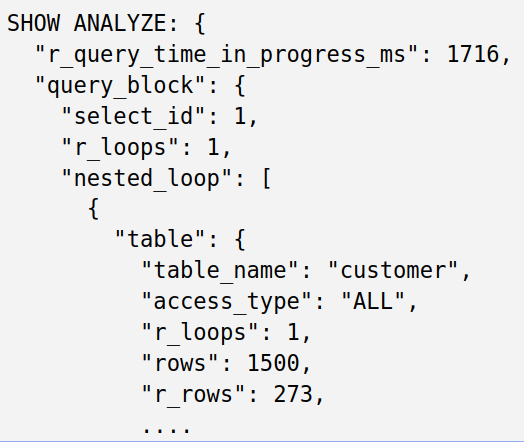Category Archives: Development
In the previous blog, MariaDB & K8s: Create a Secret and use it in MariaDB deployment, we used the Secrets resource to hide confidential root user data, and in the blog before that in the series, MariaDB & K8s: Communication between containers/Deployments, we created 2 containers (namely MariaDB and phpmyadmin) in a Pod. That kind of deployment didn’t have any persistent volumes.
In this blog we are going to create separate Deployments for MariaDB and WordPress applications as well as a Service for both in order to connect them. Additionally we will create Volume in a Pods of a MariaDB Deployment.
…
Continue reading “MariaDB & K8s: Deploy MariaDB and WordPress using Persistent Volumes”
In the previous blog we created a stateless application, deployed it with K8s resource Deployment, and exposed the root password, which, regarding security, is of course not recommended. K8s allows one to hide confidential data using specific K8s resources.
Let’s see how to use Secrets in K8s.
Secrets in K8s
In order to save confidential data one can use a K8s resource called Secret.
One can create Secret from the CLI by running kubectl create secret.
Here we will use two methods to create the secret.
…
Continue reading “MariaDB & K8s: Create a Secret and use it in MariaDB deployment”
Seppo Jaakola is going to present the topic “MariaDB Galera Cluster Security” at the Security MariaDB Server Fest (Wed 6 April 2022).
I’m currently watching his talk. Let me share with you some details. Seppo is not talking about native MariaDB security features that are by default supported by Galera, but due to the distributed cluster topology additional security related measures are needed. He talks about cluster topology, cluster communication security, Galera enhancement Data at REST encryption and the new 10.9 feature Node screening by IP Allowlist.
Do you have questions to ask Seppo?
…
Continue reading “Quick peek: MariaDB Galera Cluster Security talk”
In the previous blog, a background Deployment resource was created from a YAML file, consisting of a single container (MariaDB) that acts as a background container.
In this blog we are going to proceed to create the frontend container to communicate with the backend through a Service and other resources.
About Services
When an application is run through the Deployment Pods are created and destroyed dynamically. When created, they get the internal IP address in a cluster, and since they are ephemeral, there needs to be a stable way to allow communications between Pods.
…
Continue reading “MariaDB & K8s: Communication between containers/Deployments”
SHOW ANALYZE
If you ever had to do query performance troubleshooting with MariaDB, you should be
familiar with MariaDB’s ANALYZE for statements feature. It does what EXPLAIN ANALYZE does in some other database systems: ANALYZE query runs the query and produces EXPLAIN output, amended with the data from the query execution:
FROM orders, customer
WHERE
customer.c_custkey = orders.o_custkey AND
customer.c_acctbal < 0 AND
orders.o_totalprice > 200*1000
+—-+————-+———-+——+—————+————-+———+——————–+——–+——–+———-+————+————-+
| id | select_type | table | type | possible_keys | key | key_len | ref | rows | r_rows | filtered | r_filtered | Extra |
+—-+————-+———-+——+—————+————-+———+——————–+——–+——–+———-+————+————-+
| 1 | SIMPLE | customer | ALL | PRIMARY,…
…
Continue reading “10.9 preview feature: SHOW ANALYZE and EXPLAIN FOR CONNECTION support”
The MariaDB 10.9 preview releases introduce a MySQL compatibility syntax extension, range notation. The ‘last’ keyword was added in JSON path expression, as requested in MDEV-22224 and MDEV-27911. Additionally, negative indexes are now also supported. Range notation, implemented using the ‘to’ keyword, and the ‘last’ keyword, is basically an array element selector.
Syntax:
Range notation:
[M to N] selects a range of elements starting from index M to N.
Last keyword:
[last-N] / [last] selects the Nth from last element, and last element, respectively.
…
Continue reading “10.9 preview feature: JSON path expression and JSON_OVERLAPS()”
This is the first in a series of blogs explaining how to use MariaDB in Kubernetes (K8s), as well as explaining some important concepts of K8s and of MariaDB.
This blog explains how to start MariaDB as a stateless application in K8s using the CLI and explores different commands you can run on your CLI.
The prerequisites are that you have installed kubectl (which will also install Docker runtime) and minikube (local K8s).
Let’s first start the minikube
$ minikube start && kubectl get nodes
NAME STATUS ROLES AGE VERSION
minikube Ready control-plane,master 104d v1.22.2
The Pod is a K8s resource and the smallest unit in K8s.
…
In this blog we are going to see how to create a link to a remote server and use it to access multiple tables at once.
In the previous blog we have seen how to establish a remote connection between Docker containers.
The way we did it was to specify the connection string to reference a single table only.
But what if we need more tables, what if need a whole database?
The solution is to link to a remote database with the CREATE SERVER statement.
A link obtained this way can be passed to the CREATE TABLE statement of a storage engine (SE) to make a connection where using the table discovery feature SE will find out about the table fields and create the table.
…
Continue reading “Create a link to a remote server and access data using CONNECT SE”
